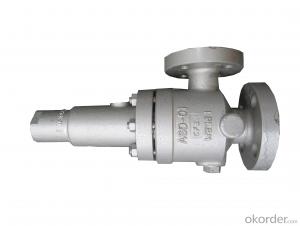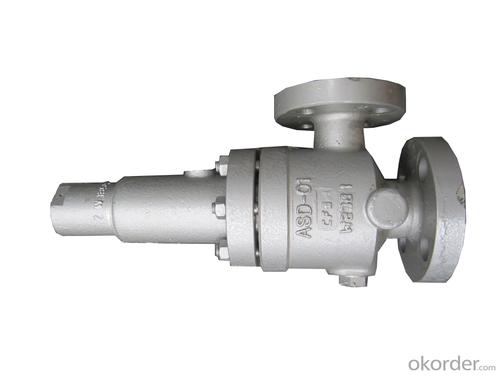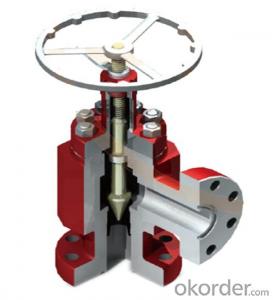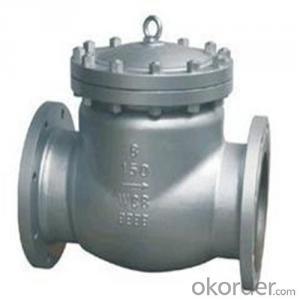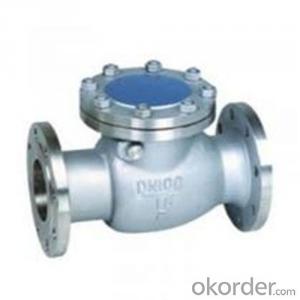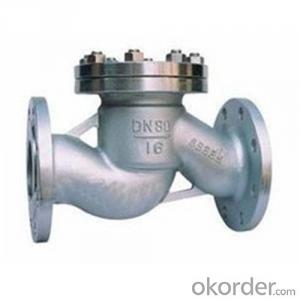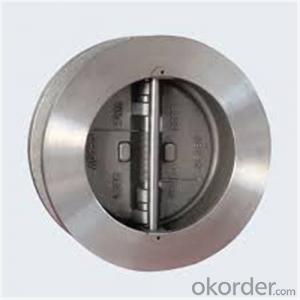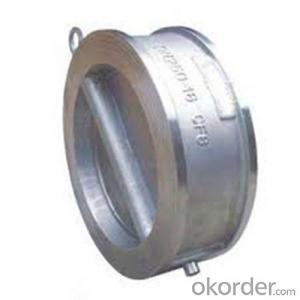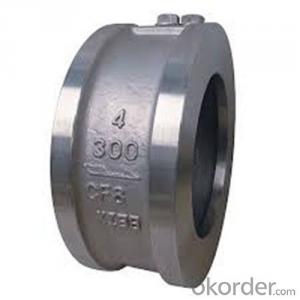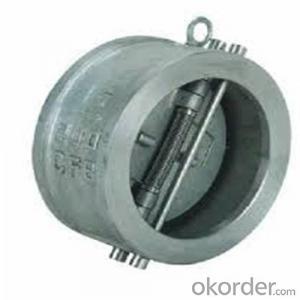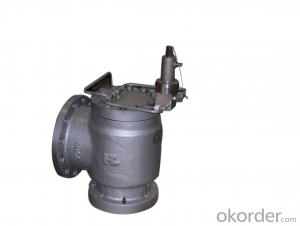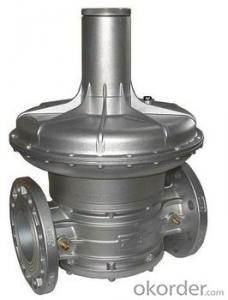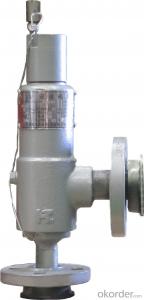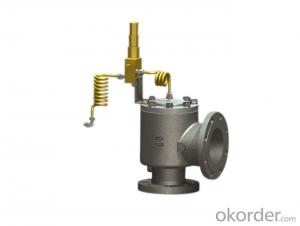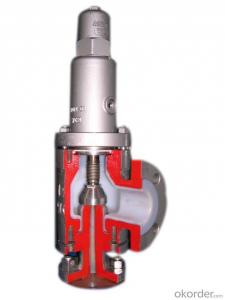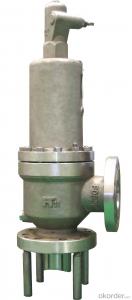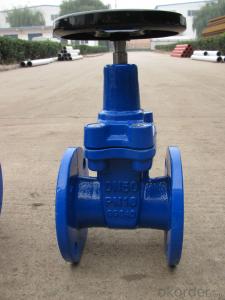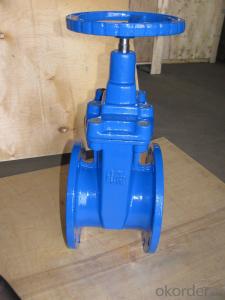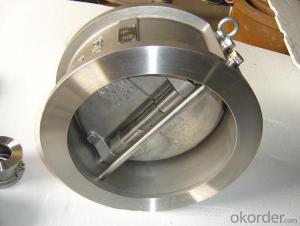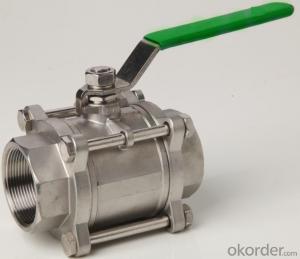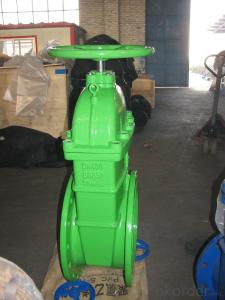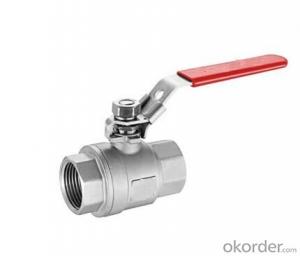High Performance Coventional type Pressure Reducing Valve
- Loading Port:
- China Main Port
- Payment Terms:
- TT OR LC
- Min Order Qty:
- -
- Supply Capability:
- -
OKorder Service Pledge
OKorder Financial Service
You Might Also Like
Application:
A pressure relief valve (PRV) is a safety device that relieves overpressure in a vessel or system. When the pressure of vessel or system increased beyond the specified design pressure or maximum allowable working pressure, PRV will be opened automaticly to relief the overpressure for proteding the vessel or system. The PRV will be closed if the pressure reached specified design pressure so that to ensure the normal operation and protect the vessel or system.
Our Pressure Relief Valve has been designed and manuractured according to following Standard:
♦ ISO 4123-1 Safety Devices for Portection Against Excessve Pressure
♦ API STD 526 Flanged Steel Pressure Relief Valves
♦ API STD 527 Seat Tightness of Pressure Relief Valves
♦ ASME Boiler and Pressure Vessel Code Section VIII Division 1, Rules for Construction of Pressure Vessels
Peformance:
♦ Type: Conventional, Bellows
♦ Size:1" D 2"- 8" T 10"
♦ Class:150lb~2500lb
♦ Temperature:-268~+538°C
♦ Fluid: Gas, Steam, and Liquid
♦ Material: Carbon steel, Stainless steel, Alloy steel
♦ The allowable tolerance of the set pressure: ≤±3%
♦ Overpressure: ≤10%(gas)/≤20%(liquid)
♦ Blowdown: ≤10%(gas)/≤20%(liquid)
♦ Tightness: conforms to API STD 527
Features:
♦The solid nozzle is screwed into the body, which makes the maintenance easy.
♦ The shape of the disc holder has been designed to enhance the effect of the fluid thrust for an instant lift of the disc.
♦ Blowdown control is provided with adjustable nuzzle ring only.
♦ The adequate terials and clearance between disc holder and guide , spindle and adjusting screw assures disc to lift successfully.
♦ The surface of both the disc and the nozzle seat are deposited with Stellite. Excellent flatness and surface finish of the seating surfaces by precision machining and lapping assure pressure relief valve to have high degree of seat tightness and long using life.
♦ The bellows of balanced bellows pressure relief valves can not only avoid and effect of variable back pressure in the system , but also protect spring and other trim components from corrosive media.
♦ Materials are chosen carefully , and the manufacture of the spring and the bellows has strict technological process. Each of them is tested and checked strictly.
- Q: I am trying to replace a leaky valve stem. And I didn't know how to get to the valve core and when I get there how do I change it? The charge is recovered. It is a 2000 Impala. Thanks in advance.Noah
- Ac Valve Core Removal Tool
- Q: Im replacing the valve stem seals and i dont know how to remove the springs and with the valve compressor wont fit in the engine
- you will need to remove the plugs, get a air compressor with a hose that will screw into the spark plug hole ! then you pump the compressor up to about 40 or 50 pounds, take the rockers off and pull the push rods ! you will need a spring compressor to squeeze the valve spring and take a pair of need nose pliers and take the keepers out and then the spring will lift off the valve stem ! after the spring is off you can remove the valve seal ! i recommend for you to use the umbrella type seals !
- Q: okay, well, I understand partials. But, on a trumpet, what does each valve do? I mean, I had this idea that each one was a half-step up from the previous...but that's not true. Is there some sort of pattern to them? Does each one have a different purpose?...Please answer as basically as possible. I don't play music very often, and I definitely don't speak brass-ish.
- Trumpet Valve
- Q: So I know the main purpose of the EGR valve is to recirculate some exhaust to the cylinders to reduce NOx emissions. However, a mechanic told me that a malfunctioning EGR valve can make the engine run way hotter, and that this can damage the pistons, or other components of the engine, over time. Is that true?
- Well some what true an egr mifht create a vacuum leak making the engine run faster but to burn a piston it woul have to be close to the cyl like a intake leak easy way to check for vacuum leaks is to take a can of carb clean and spray down the intake and listen for idle change (don't spray dist)
- Q: What are the function of reed valves on a motorcycle?
- Reed Valves
- Q: My valve cover gasket has less them 2k miles on it and i noticed in some areas there is a lil oil shine around it so i was thinkin maybe i have to retighten the valve cover a lil bit more?
- yes, tighten them down a little more.
- Q: my friend needs a flap valve replacement. does anyone no how serious this is, i dnt wanna lose my best friend?!!!
- Its heart surgery, which is riskier than many other surgeries, but valve replacement is routine procedure. There's a variety of different procedures that are used and several different types of replacement valves. Some valves can be repaired and some need to be replaced. Repairs usually give a person a normal or nearly normal valve that will last forever. Valve replacements don't work quite as wells as repairs and they usually need to be replaced in a decade or so. Most people can have the valved replaced by threading a scope through the arteries or using tiny incisions, but some people require open heart surgery. My friend had one of his valves replaced with a valve made from a pig heart and he was only in the hospital one night, and back to work a week later.
- Q: i disconnected the heater valve because it went bad, but when i removed it i forgot how it came off when i went to the auto parts store. i just need to know what way it should be facing and which hose goes where? can someone please help me?
- Heater control valve at heater core? If so the valve is horizontal with the vacuum motor on bottom, the vacuum port pointing towards rear of engine. The heater hoses for heater core are obvious, the hoses from the engine, the hose closest to the valve cover goes to the drivers side of the valve, the hose that wraps around from the front of the engine goes to the passenger side of the valve.
- Q: 1991 Buick Spirit smokes early for five minutes in morning, from exhaust. Tried every carburator and gas cleanative fluid. Mechanic says Valve job'.
- Probably just the valve stem seals need replacing. NOT a entire 'valve job'. The seals help scrape oil off of valve stem to lower the amount of oil weeping into cylinder when engine is running or turned off. As the rubber ages, it cracks and loses its elasticity and doesn't wipe the stem properly. This is a lot cheaper versus a full 3-angle valve job which requires removal of the heads.. Get a second opinion.
- Q: like they say on 4 strokes you gotta go get valve jobs, and they cost bout 300 they say? well what does the mechanic do? can it be done at home and your just adjusting them?
- i'm 18 and race a crf40r i admire the motorbike. in case you desire to flow extra decrease priced i might decide for 2 stroke. have faith it or not 2 stroke is extra maintence even though it is lots extra decrease priced to rebuild. A 2 stroke on long tracks with enormous sweapers is purely as speedy as a 450 if not speedier. I enjoyed my 250 haha. 450's are somewhat a combat on the song they supply a real undesirable arm pump by using engine breaking. and 250 4 strokes are like driving the previous one hundred twenty five's all you do is shift. in case you may desire to get an rm 250 2 stroke they have the extra appropriate potential bands and have very solid bottomw end.
Send your message to us
High Performance Coventional type Pressure Reducing Valve
- Loading Port:
- China Main Port
- Payment Terms:
- TT OR LC
- Min Order Qty:
- -
- Supply Capability:
- -
OKorder Service Pledge
OKorder Financial Service
Similar products
Hot products
Hot Searches
Related keywords
